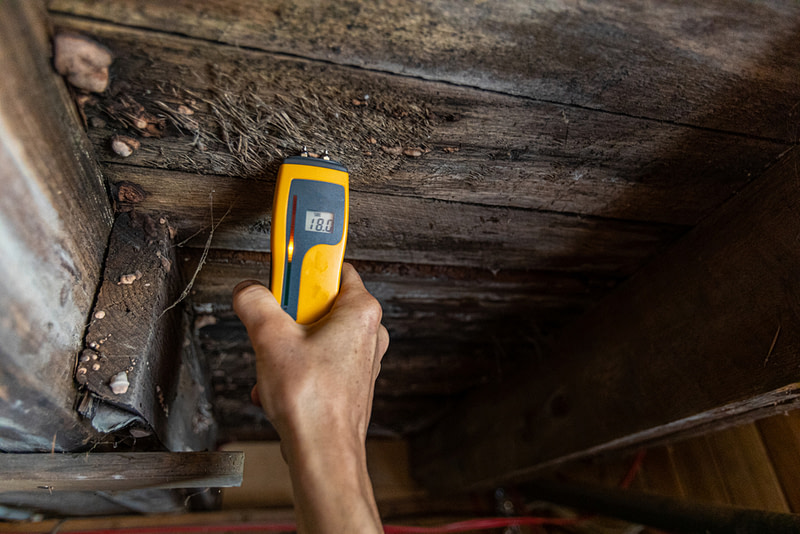
How to Identify Mold in Your Home: A Comprehensive Guide
I. Introduction
Mold growth in homes can not only compromise the structural integrity of the building but also pose serious health risks to occupants. Identifying mold early is crucial for effective remediation and maintaining a healthy indoor environment. This comprehensive guide will equip you with the knowledge and tools necessary to recognize common signs of mold, locate areas where mold is likely to grow, understand different types of mold commonly found indoors, and take proactive measures to address mold issues and safeguard both property and health.
II. Common Signs of Mold Growth
Mold can be elusive, often thriving in hidden corners of our homes where moisture accumulates. Recognizing the common signs of mold growth is essential for homeowners to take proactive measures against potential health hazards and structural damage. By understanding these visual and olfactory cues, individuals can detect mold early, allowing for timely intervention and remediation to prevent further spread and mitigate health risks for occupants.
Visible Signs
Mold often makes its presence known through visible signs on surfaces in the home. From discolored patches to musty odors, these signs can serve as early warnings of mold growth. Understanding these indicators is essential for prompt action and effective remediation.
Health Symptoms
Beyond visible signs, mold can also manifest through various health symptoms in occupants. Allergic reactions, respiratory issues, and general discomfort may signal prolonged exposure to mold spores. Recognizing these symptoms can prompt homeowners to investigate further for potential mold contamination.
III. Where to Look for Mold in Your Home
Knowing where to look for mold is crucial for comprehensive mold detection and prevention efforts. High-moisture areas, such as bathrooms and kitchens, are notorious breeding grounds for mold, while often overlooked spaces like basements and attics can harbor hidden colonies. By conducting thorough inspections in these vulnerable areas, homeowners can identify potential mold sources early on, addressing underlying moisture issues and implementing preventive measures to safeguard their homes.
High-Moisture Areas
Certain areas of the home are more susceptible to mold growth due to higher levels of moisture. Bathrooms, kitchens, and basements are prime locations where water leaks and condensation can create ideal conditions for mold proliferation.
Basements and Crawl Spaces
The often neglected areas of basements and crawl spaces can harbor mold growth, particularly in regions with high humidity levels. Understanding the vulnerabilities of these spaces is crucial for comprehensive mold inspection and remediation efforts.
Attics
While attics may seem less prone to mold growth, issues such as roof leaks and inadequate ventilation can create conducive environments for mold colonization. Regular inspection of attics is essential for early detection and prevention of mold-related problems.
HVAC Systems
The HVAC system plays a significant role in indoor air quality and can also be a source of mold contamination if not properly maintained. Regular inspection and cleaning of air ducts, filters, and drip pans are necessary to prevent mold growth and ensure optimal system performance.
IV. Identifying Different Types of Mold
Not all molds are created equal, and understanding the various types of indoor mold is essential for effective remediation strategies. Different molds pose different health risks, with some species known to produce toxins that can exacerbate respiratory conditions or cause allergic reactions. By familiarizing themselves with the characteristics and risks associated with each type of mold, homeowners can better assess the severity of contamination and make informed decisions regarding cleanup and mitigation efforts.
Common Types of Indoor Mold
Mold comes in various species, each with its own characteristics and potential health risks. Understanding the common types of indoor mold, such as Stachybotrys Chartarum, Aspergillus, Penicillium, and Alternaria, is essential for targeted remediation efforts and effective communication with professionals.
Characteristics and Risks Associated with Each Type
Different mold species exhibit distinct appearances and properties, ranging from allergenic to toxigenic. Familiarizing yourself with the characteristics and associated health risks of each type of mold will empower you to make informed decisions regarding mold remediation and mitigation strategies.
Methods of Identification
While visual inspection is a primary method for identifying mold, additional tools and techniques may be necessary for accurate assessment. Sampling and laboratory analysis can provide valuable insights into the types and concentrations of mold present in your home, guiding targeted remediation efforts.
V. Conclusion
Identifying mold in your home is the first step towards effective remediation and prevention of further damage. By recognizing common signs of mold growth, knowing where to look, understanding different types of mold, and taking proactive measures, you can safeguard your home and protect your health. Remember, if you suspect mold growth beyond your expertise, seek assistance from qualified professionals for thorough inspection and remediation.
VI. Additional Resources
For more information on mold identification, remediation, and prevention, consult the following resources:
- EPA Mold Guide
- CDC Mold Resources
- Local Health Departments
